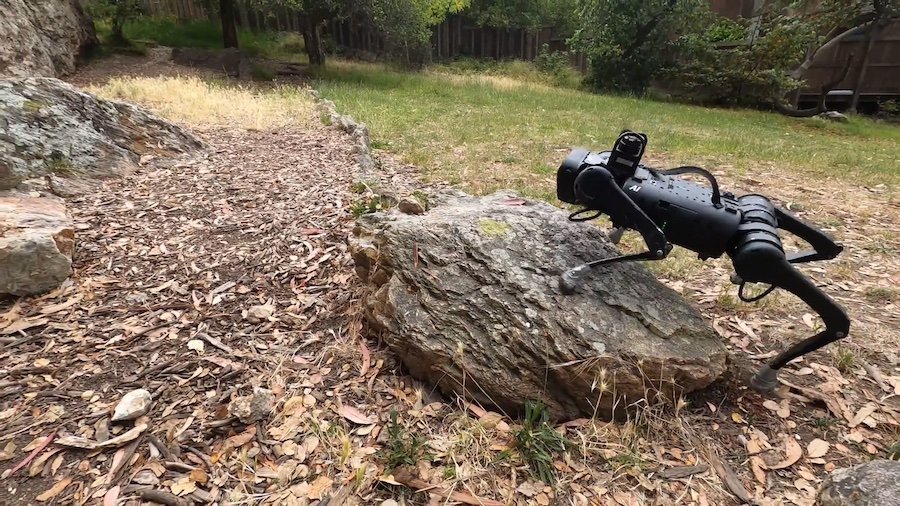Robotics
Low-Cost Robot Navigates Nearly Any Obstacle

A team of researchers has designed a robotic system that enables a low-cost, small legged robot to navigate nearly any obstacle or terrain. The robot can climb and descend stairs nearly its height or navigate rocky, slippery, uneven, steep and varied terrain. It can also walk across gaps, scale rocks, and operate in the dark.
The project to develop the system was carried out by researchers at Carnegie Mellon University’s School of Computer Science and the University of California, Berkeley.
Empowering Small Robots With New Skills
Deepak Pathak is an assistant professor in the Robotics Institute.
“Empowering small robots to climb stairs and handle a variety of environments is crucial to developing robots that will be useful in people’s homes as well as search-and-rescue operations,” Pathak said. “This system creates a robust and adaptable robot that could perform many everyday tasks.”
The robot was tested on uneven stairs and hillsides at public parks, which tested its ability to walk across stepping stones and over slippery surfaces. It was also tasked with climbing stairs that would be the equivalent of a human jumping over a hurdle. The robot achieves an impressive ability to quickly adapt and master the terrain by using its vision and a small onboard computer.
The robot was trained with 4,000 clones in a simulator. These clones practiced walking and climbing complex terrain, and the speed of the simulator enabled the robot to achieve six years of experience in just one single day.
The motor skills learned during training were stored by the simulator in a neural network, which researchers then copied to the real robot. This innovative approach meant no hand-engineering of the robot’s movements.
Many of today’s robotic systems rely on cameras that create a map of the surrounding environment, which is then used to plan out the robot’s movements before they are carried out. However, this process can be slow and prone to errors due to inaccuracies or misperceptions in the mapping stage. These inaccuracies can impact the planning and movements.
While mapping and planning prove useful for systems focused on high-level control, they are not always the best for the dynamic requirements of low-level skills, such as walking or running.
Efficient and Quick Maneuvering
The newly developed robotic system skips over the mapping and planning phases and directly routes the vision inputs to the control of the robot. This basically means the robot sees and moves accordingly. The breakthrough technique enables the robot to react to its complex terrain very quickly and effectively.
The robot’s movements are trained through machine learning, making the robot low-cost. The tested robot was at least 25 times cheaper than the alternatives on the market. According to the team, their algorithm could make low-cost robots far more accessible.
Ananye Agarwal is an SCS Ph.D. student in machine learning.
“This system uses vision and feedback from the body directly as input to output commands to the robot’s motors,” Agarwal said. “This technique allows the system to be very robust in the real world. If it slips on the stairs, it can recover. It can go into unknown environments and adapt.”
The robotic system was heavily inspired by nature. For a robot the size of less than a foot tall, it learned to adopt the movements humans use to step over high obstacles in order to scale stairs or obstacles its height. The system uses hip abduction to overcome obstacles that are even difficult for the most advanced legged robotic systems available.
The team also looked toward four-legged animals for inspiration.
“Four-legged animals have a memory that enables their hind legs to track the front legs. Our system works in a similar fashion,” Pathak said.
The onboard memory allows the rear legs to remember what the camera saw, helping it maneuver obstacles.
Ashish Kumar is a Ph.D. student at Berkeley.
“Since there’s no map, no planning, our system remembers the terrain and how it moved the front leg and translates this to the rear leg, doing so quickly and flawlessly,” Kumar says.
The new research could play a big role in solving some of the major challenges surrounding legged robots. It could even help lead to their use in homes.














